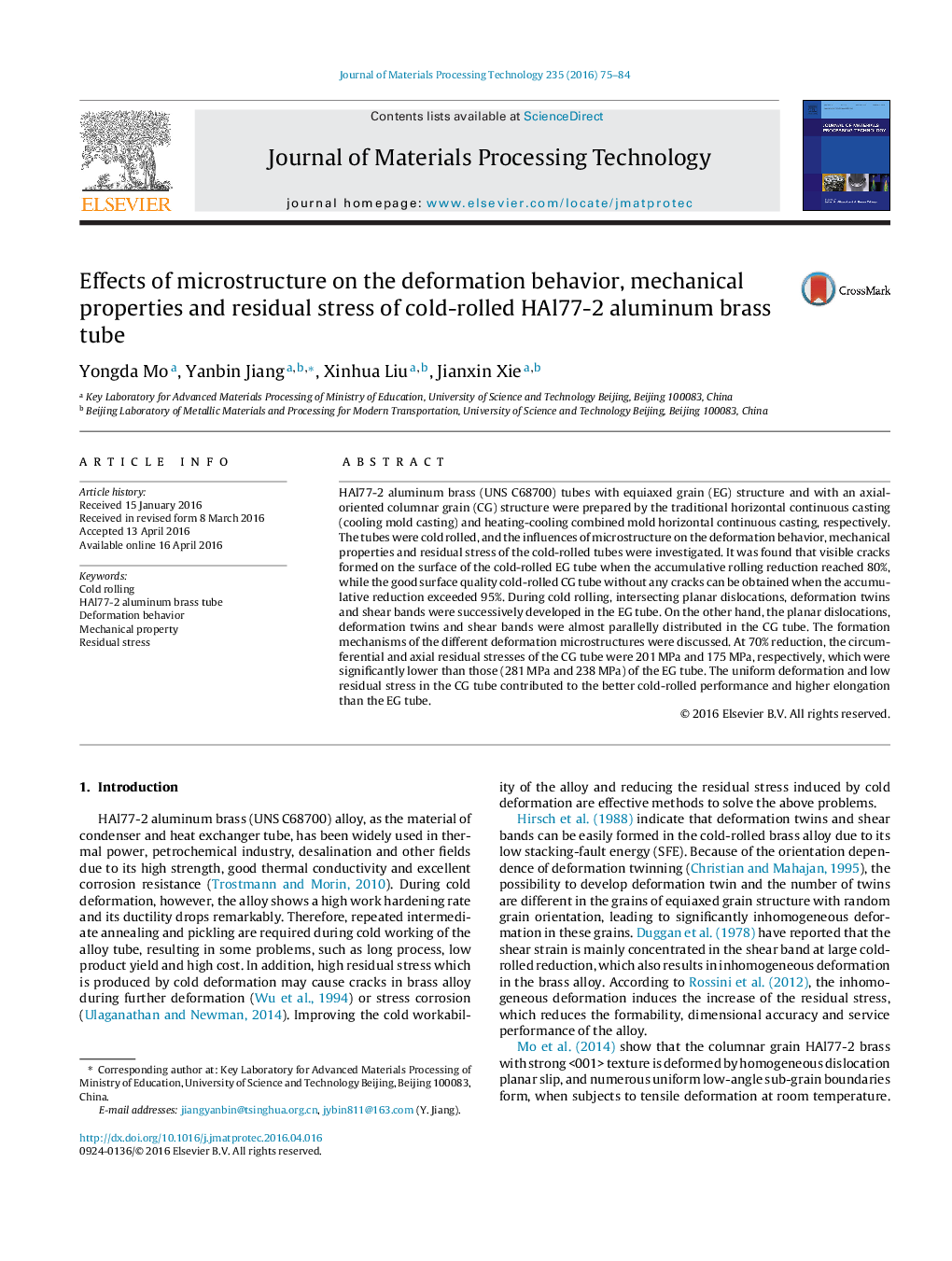| Article ID | Journal | Published Year | Pages | File Type |
|---|---|---|---|---|
| 790824 | Journal of Materials Processing Technology | 2016 | 10 Pages |
HAl77-2 aluminum brass (UNS C68700) tubes with equiaxed grain (EG) structure and with an axial-oriented columnar grain (CG) structure were prepared by the traditional horizontal continuous casting (cooling mold casting) and heating-cooling combined mold horizontal continuous casting, respectively. The tubes were cold rolled, and the influences of microstructure on the deformation behavior, mechanical properties and residual stress of the cold-rolled tubes were investigated. It was found that visible cracks formed on the surface of the cold-rolled EG tube when the accumulative rolling reduction reached 80%, while the good surface quality cold-rolled CG tube without any cracks can be obtained when the accumulative reduction exceeded 95%. During cold rolling, intersecting planar dislocations, deformation twins and shear bands were successively developed in the EG tube. On the other hand, the planar dislocations, deformation twins and shear bands were almost parallelly distributed in the CG tube. The formation mechanisms of the different deformation microstructures were discussed. At 70% reduction, the circumferential and axial residual stresses of the CG tube were 201 MPa and 175 MPa, respectively, which were significantly lower than those (281 MPa and 238 MPa) of the EG tube. The uniform deformation and low residual stress in the CG tube contributed to the better cold-rolled performance and higher elongation than the EG tube.
